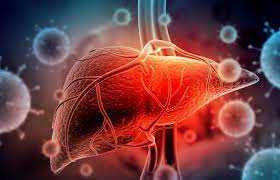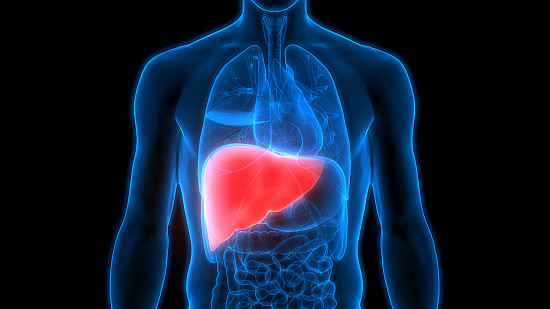
Hepatitis E
Hepatitis E is an inflammation of the liver caused by infection with the hepatitis E virus (HEV). Although it is rare in developed countries; however, it is widely spreading in many developing countries.
HEV has at least 4 different types: genotypes 1, 2, 3 and 4. Genotypes 1 and 2 have been found only in humans, genotypes 3 and 4 circulate in several animals including pigs, wild boars and deer without causing any disease, and occasionally infect humans. HEV is an icosahedral, nonenveloped, single-stranded RNA virus that is approximately 27 to 34 nm in diameter.
The incubation period of HEV infection ranges from 28 to 40 days.
Mode of Transmission
- Genotype 1 and 2 are human viruses transmitted through the fecal-oral route from contaminated water and are found mainly in developing countries in Africa, Asia, Central America and the Middle East
- Genotype 3 and 4 are mainly found in animals (zoonitics); transmitted to humans by eating undercooked meat such as pork and dear and are mainly found in developed countries such as the United States, Australia, Japan and China
- Person-to-person transmission is rare
- HEV can also be transmitted by blood transfusion, particularly in endemic areas
- HEV can be transmitted vertically from infected mothers to their infants and can result in significant perinatal mortality and fetal loss
- There is insufficient data regarding transmission of HEV via breast milk; however, HEV has been isolated in breast milk, and serum titers were noted to be comparable.
Pathophysiological Stages
Genotypes 1 and 2 are usually seen in young adults (15-40) as part of outbreaks, causing acute infection that is self-limited and does not progress to chronic infection; however, acute infections in pregnant patients or patients with chronic liver disease can be severe with progression to fulminant liver failure.
Genotype 3 and 4 usually cause sporadic cases and are mainly see in older adults (older than 40). They can cause acute infections with a possibility of progression to chronic infections mainly in immunocompromised patients such as solid organ transplant patients on immunosuppressants and HIV patients with AIDs.
The pathophysiological stages of HEV are as follow;
- Ingestion of HEV
- Reaching to liver via absorption through gastrointestinal mucosa into the portal circulation
- Replication of RNA in hepatic tissues (only)
- Production of hepatic morphological changes that resemble to both cholestasis and acute hepatitis
- Excretion in feces
Sign and Symptoms
A vast majority of patients are asymptomatic or have a mild clinical disease. When clinical signs and symptoms develop, they are similar to those seen with other forms of acute viral hepatitis including;
- Initial phase of mild fever, malaise, reduced appetite (anorexia), nausea and vomiting lasting for a few days
- Abdominal pain, itching, skin rash, or joint pain
- Jaundice, dark urine and pale stools
- Slightly enlarged, tender liver (hepatomegaly)
- Right upper quadrant abdominal tenderness
- Extrahepatic manifestations in some patients with fulminant hepatitis
Causes and Risk Factors
- Drinking contaminated (with HEV) water
- Poor hygiene and sanitation
- Age (more common in adults than children)
- Pregnancy
- Homosexuality
- Travelling to HEV endemic country
- Immunocompromised individuals such as transplant patients/AIDS
Diagnostic Test
- Serological Nucleic Acid Testing/NATs (blood & stool)
- Anti-HEV IgM test
- Anti-HEV IgG test
- RT-PCR
- Reverse transcription loop-mediated isothermal amplification of HEV-RNA
- HEV antigen detection by enzyme immunoassays
Complications
Extrahepatic manifestations of HEV include;
- Neurological (Neuralgic amyopathy, Guillain Barre syndrome, Meningoencephalitis, Mononeuritis multiplex, Myositis, Bell’s play, Vestibular neuritis, and Peripheral Neuropathy)
- Renal (Membranoproliferative & membranous glomerulonephritis, and IgA nephropathy)
- Hematological (Thrombocytopenia, Monoclonal Immunoglobulin, Cryoglobulinemia, Aplastic Anaemia, and Hemolytic Anaemia)
- Others (Acute Pancreatitis, Arthritis, Myocarditis, Autoimmune Thyroiditis)
Medical Treatment
Acute HEV infection does not usually require antiviral therapy. In almost all cases HEV infection is spontaneously cleared. Very few case reports are available on ribavirin treatment for severe acute HEV infection. 116 Ribavirin therapy was associated with very rapid normalization of liver enzymes and HEV RNA became undetectable within a few days. Corticosteroids have been used in individual cases of ALF (Acute Liver Failure), which were retrospectively identified as being been caused by HEV infection. Steroid therapy was associated with improved liver function parameters in these cases.48 However, there is currently insufficient evidence to support.
Prevention
- Strict hygiene and sanitation
- Proper/adequate cooking of meat
- Refrain homosexual contact
- Vaccination
Conclusion
Hepatitis E, caused by the Hepatitis E virus (HEV), poses a significant global health concern due to its prevalence in developing countries and its potential to cause outbreaks in resource-limited settings. Unlike Hepatitis D, Hepatitis E can occur independently of other hepatitis viruses, although it shares similar modes of transmission, primarily through contaminated water or food.
The clinical presentation of Hepatitis E ranges from asymptomatic or mild illness to acute liver failure, particularly in pregnant women and individuals with pre-existing liver disease. Symptoms include jaundice, fatigue, nausea, and abdominal pain, resembling those of other forms of acute hepatitis. Diagnosis of Hepatitis E involves serological tests to detect specific antibodies against HEV, as well as molecular techniques like PCR for viral detection. Differential diagnosis is crucial to distinguish Hepatitis E from other causes of acute hepatitis, ensuring appropriate management and treatment. Currently, there is no specific antiviral therapy for Hepatitis E. Treatment mainly focuses on supportive care to alleviate symptoms and prevent complications. However, efforts to develop vaccines and antiviral medications for Hepatitis E are ongoing, aiming to improve outcomes and reduce transmission. Prevention strategies for Hepatitis E include ensuring access to safe drinking water and practicing good hygiene and sanitation measures, particularly in endemic regions. Additionally, awareness campaigns and surveillance systems play a vital role in detecting and controlling outbreaks.
In conclusion, Hepatitis E represents a significant public health challenge, particularly in regions with poor sanitation and limited access to clean water. Continued research efforts and international collaboration are essential to develop effective prevention strategies and therapeutic interventions to combat this viral infection and reduce its global impact.



